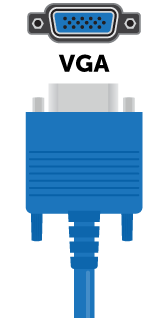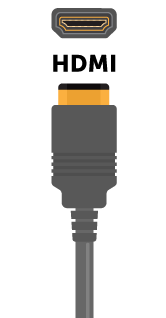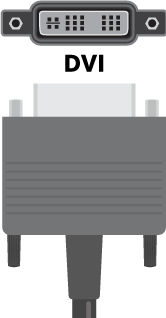| Pyrimme paikallistaa sivuillamme niin monella kielellä kuin mahdollista, mutta tämä sivu on tällä hetkellä kone Google-kääntäjän avulla. | lähellä |
-
-
tuotteet
-
resurssit
-
tuki
-
yritys
-
Mitä eroa on VGA-, HDMI-ja DVI?What’s the Difference Between VGA, HDMI and DVI?
Mennessä Steve Horton Huhtikuu 23, 2012dvi, hdmi, vga14 Comments


Kuva: Gordon McAlpinOn lähes varmaa, että näytön ja tietokoneen välinen yhteys on yksi kolmesta kaapelityypistä: VGA, HDMI ja DVI. Joten mikä on ero?
VGA on kolmen vanhin standardi, joka on otettu käyttöön vuonna 1987. VGA käsittelee vain videokuvaa, ei ääntä, ei sisällä suojausta tai digitaalisia oikeuksien hallintaa ja on analoginen signaali, mikä tarkoittaa kaapelin laatua, ja etäisyydet PC: stä monitoriin voivat vaikuttaa videon laatuun. Jos liittimessäsi on vähän peukaloruuveja kaapelin viereen, ja näyttää vasemmanpuoleisena, se on VGA.
HDMI, joka ilmestyi ensimmäisen kerran vuonna 2003, löytyy usein nykyaikaisista televisioista, mutta se on myös useimmissa uudemmissa PC-näytöissä ja vaatii nopeasti laitteistoa useimmissa kannettavissa tietokoneissa. HDMI on digitaalinen standardi, eli yhteys on joko (1) tai pois päältä (0). Kaapelin laatu, etäisyys koneesta monitoriin ja liittimen metallityyppi ovat lähes olemattomia (joten älä maksa paljon HDMI-kaapelille!) HDMI voi myös käsitellä turvallisuutta, mikä tarkoittaa, että tietyt tyyppisiä signaaleja, kuten maksutelevisiota, voidaan estää kulkemasta HDMI-kaapelia pitkin. HDMI käsittelee ääntä sekä videokuvaa, joten kuulokeliitäntä ja HDMI-kaapeli voi lähettää ääntä kannettavasta tietokoneesta. HDMI näyttää keskimmäisen grafiikan.
DVI keksittiin vuonna 1999 ja on samankaltainen kuin sekä VGA että HDMI. Se voidaan konfiguroida digitaaliseksi, analogiseksi tai molemmaksi; se voi käsitellä digitaalisten oikeuksien hallintaa; ja se voidaan muuntaa HDMI- ja VGA-liittimiksi muuntimen kaapelin tai pienjännitelaitteen kautta. Enemmän kuin todennäköisesti videokortillasi on HDMI- ja DVI-liitin, joko yksi tai toinen, ja ne toimitetaan usein tarvittavan kelkan mukana. Se ei tue HDMI-ääntä, ja se näyttää oikealta.
Nyt tiedät erot tämäntyyppisten kaapelien välillä ja kummankin plussat ja miinukset. Harkitse itsesi koulutettua videoliitännöillä!
Was this post helpful?YesNoVapaa Ajurin päivitykset
Päivitä ajurit alle 2 minuutissa nauttiaksesi paremmasta PC:n suorituskyky - Vapaa.
Vapaa Ajurin päivitykset
Päivitä ajurit alle 2 minuutissa nauttiaksesi paremmasta
PC:n suorituskyky - Vapaa.
Etkö löytänyt vastausta?Kysy kysymys yhteisöömme asiantuntijoita ympäri maailmaa ja saada vastauksen hetkessä.oleellisin Viimeaikaiset artikkelit Kiinnitä se Pinterestiin